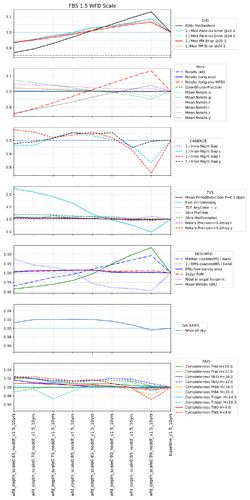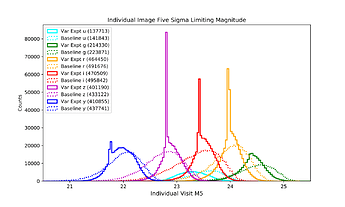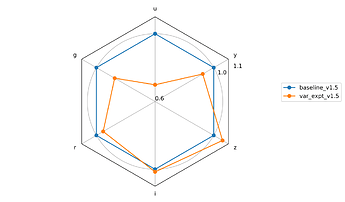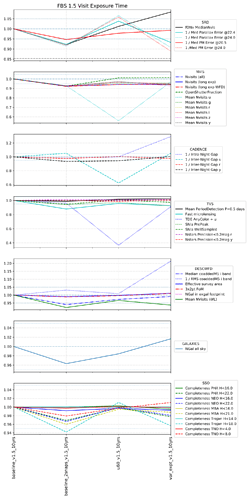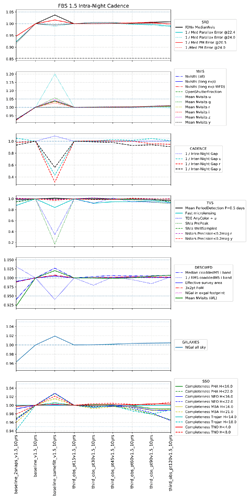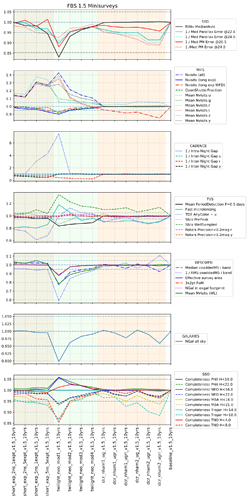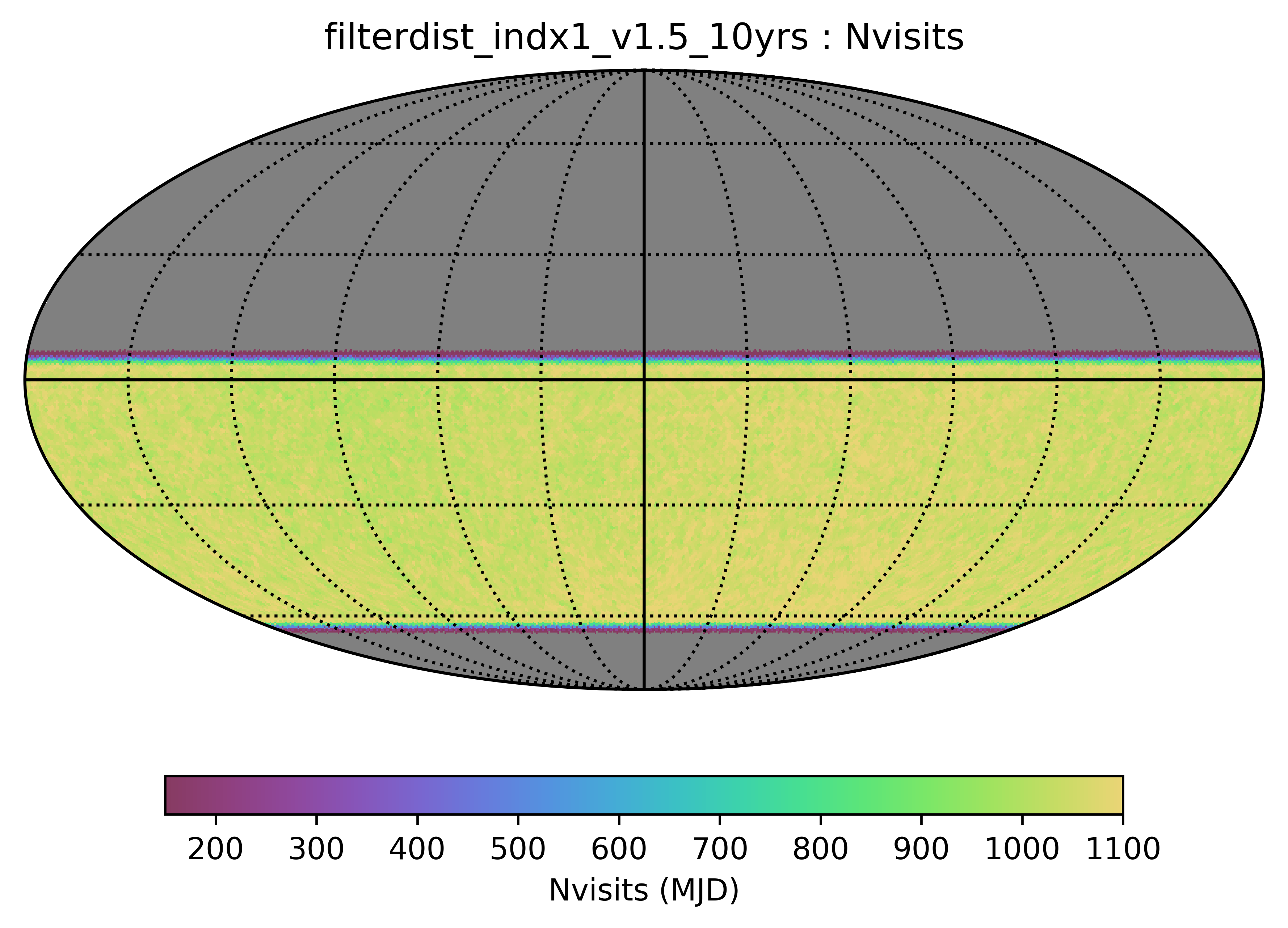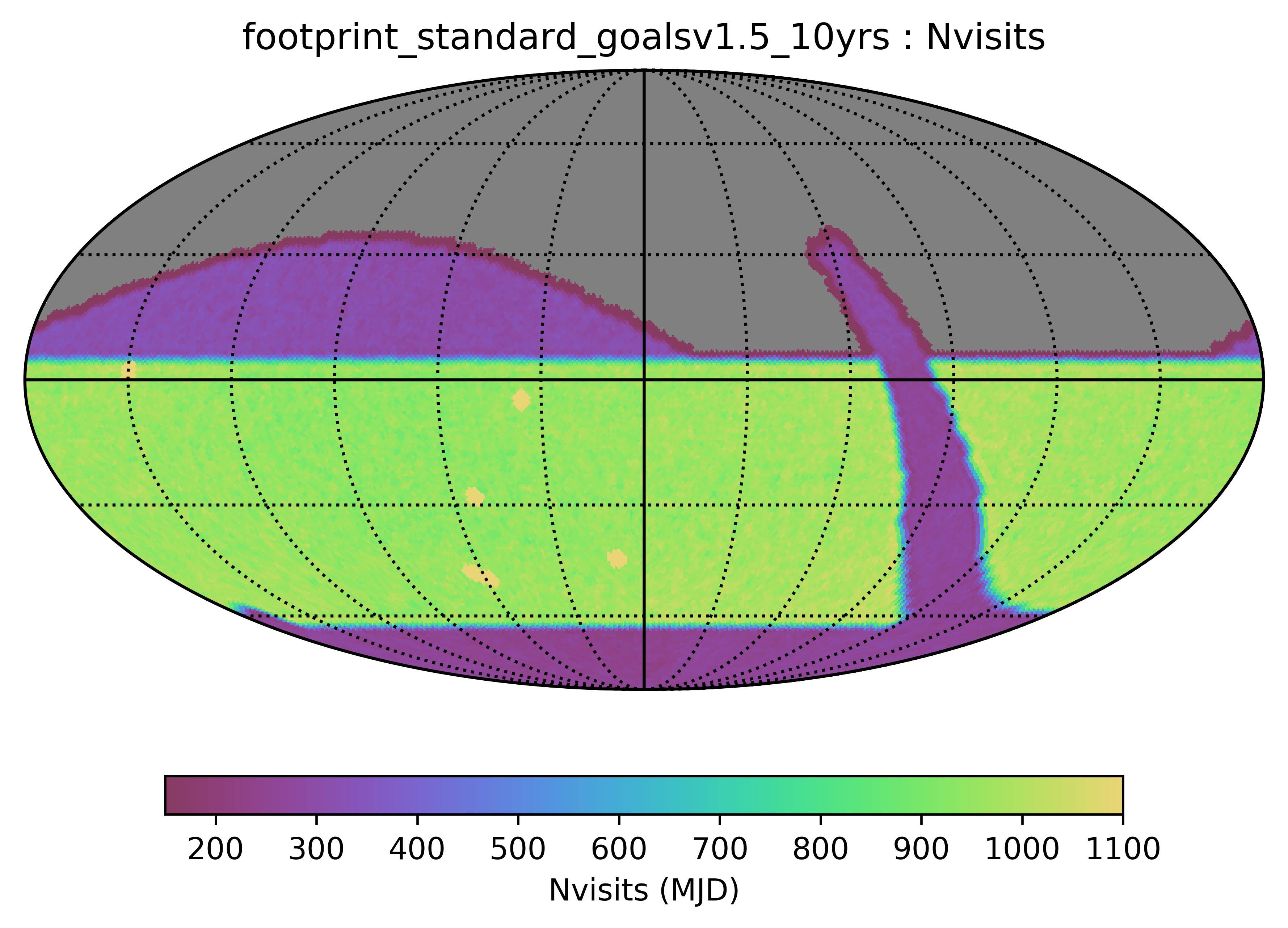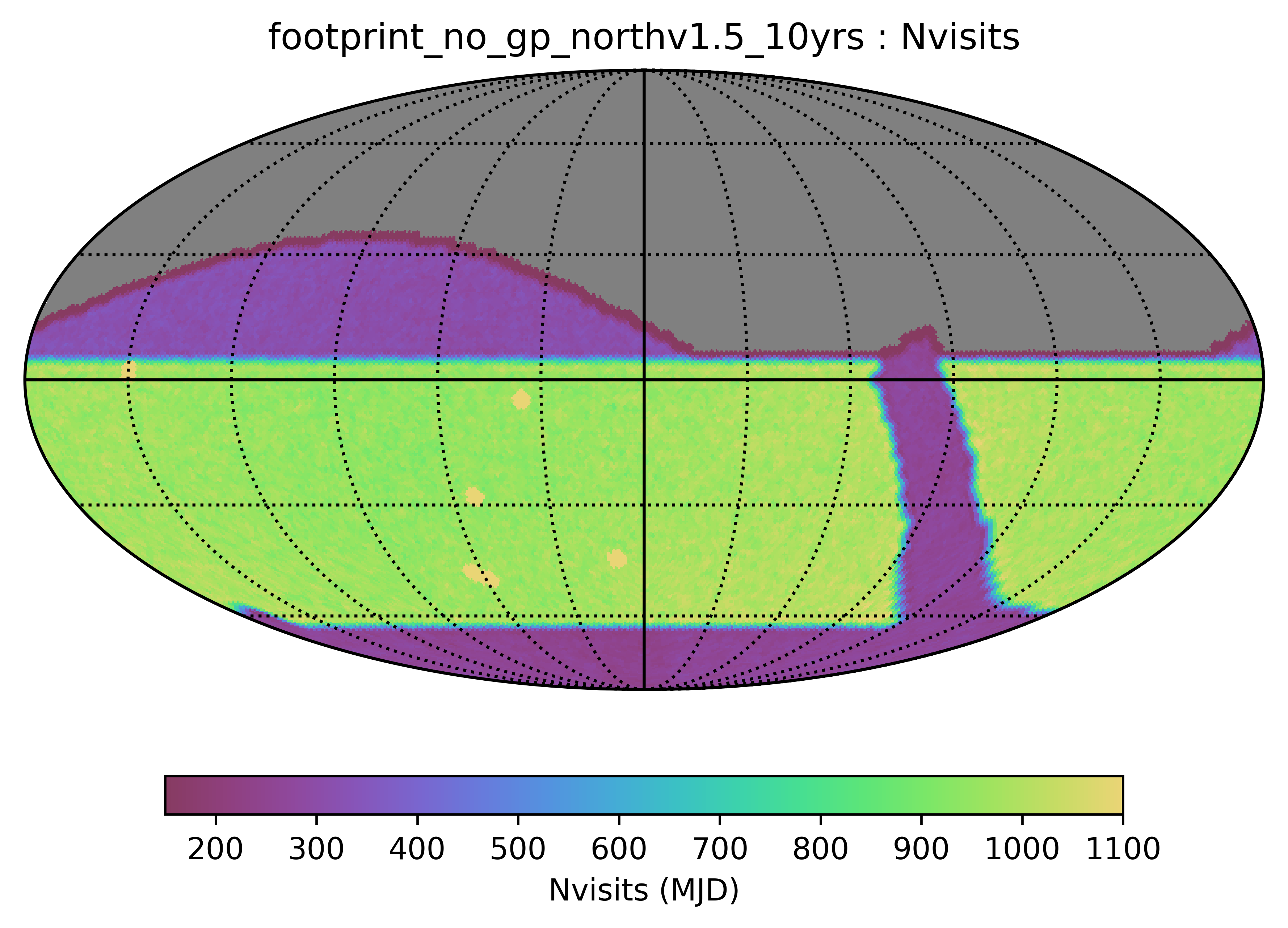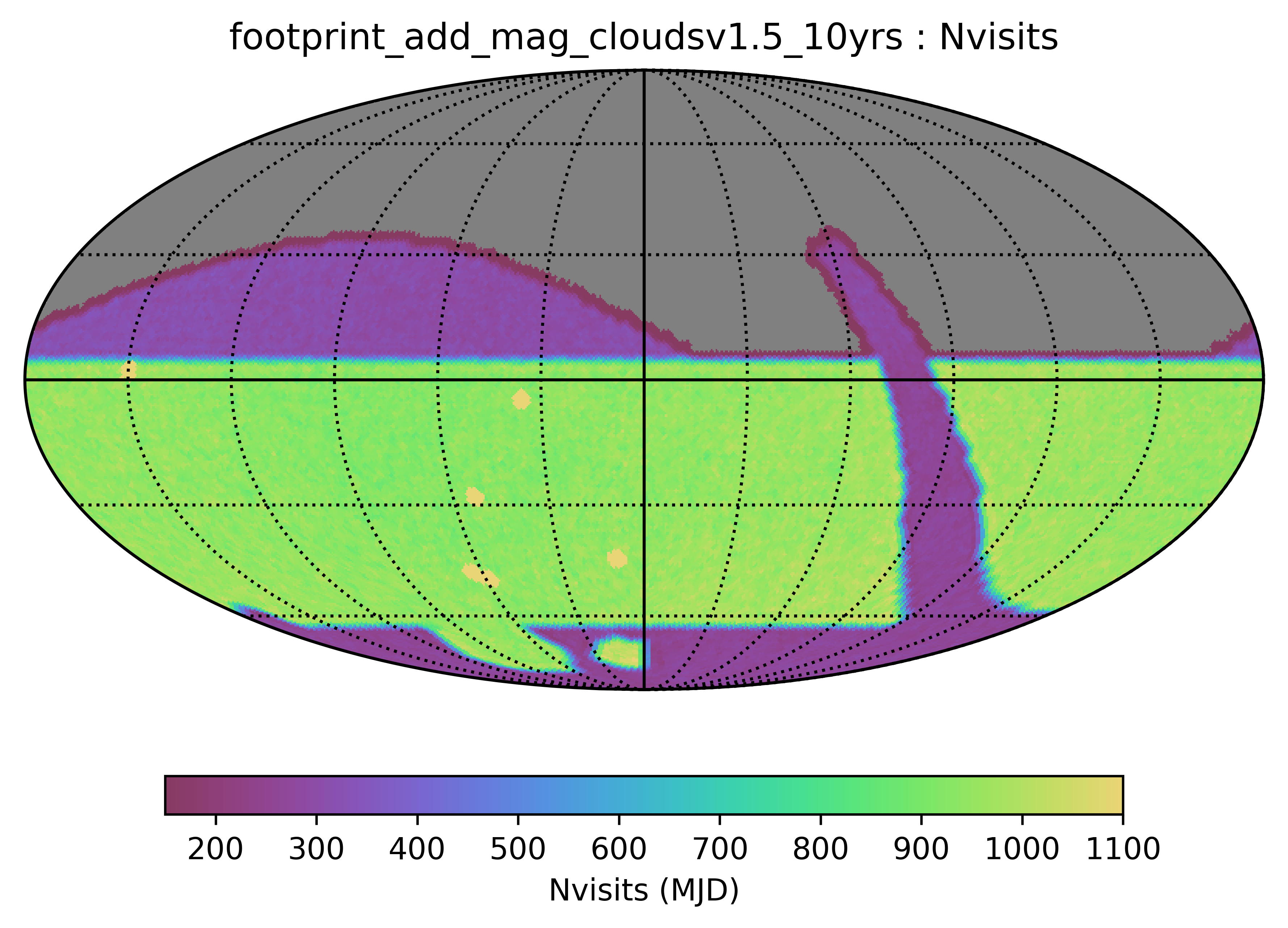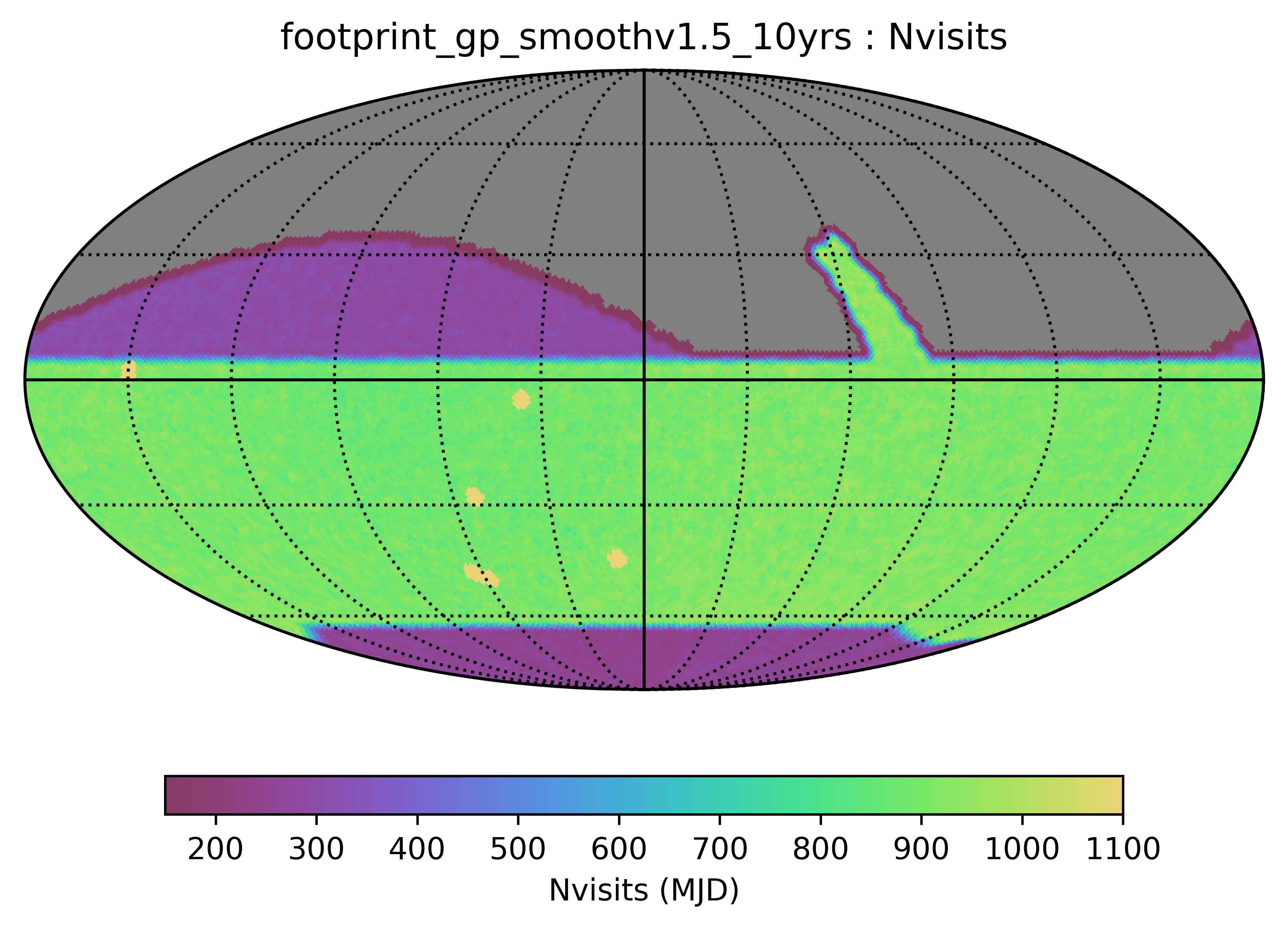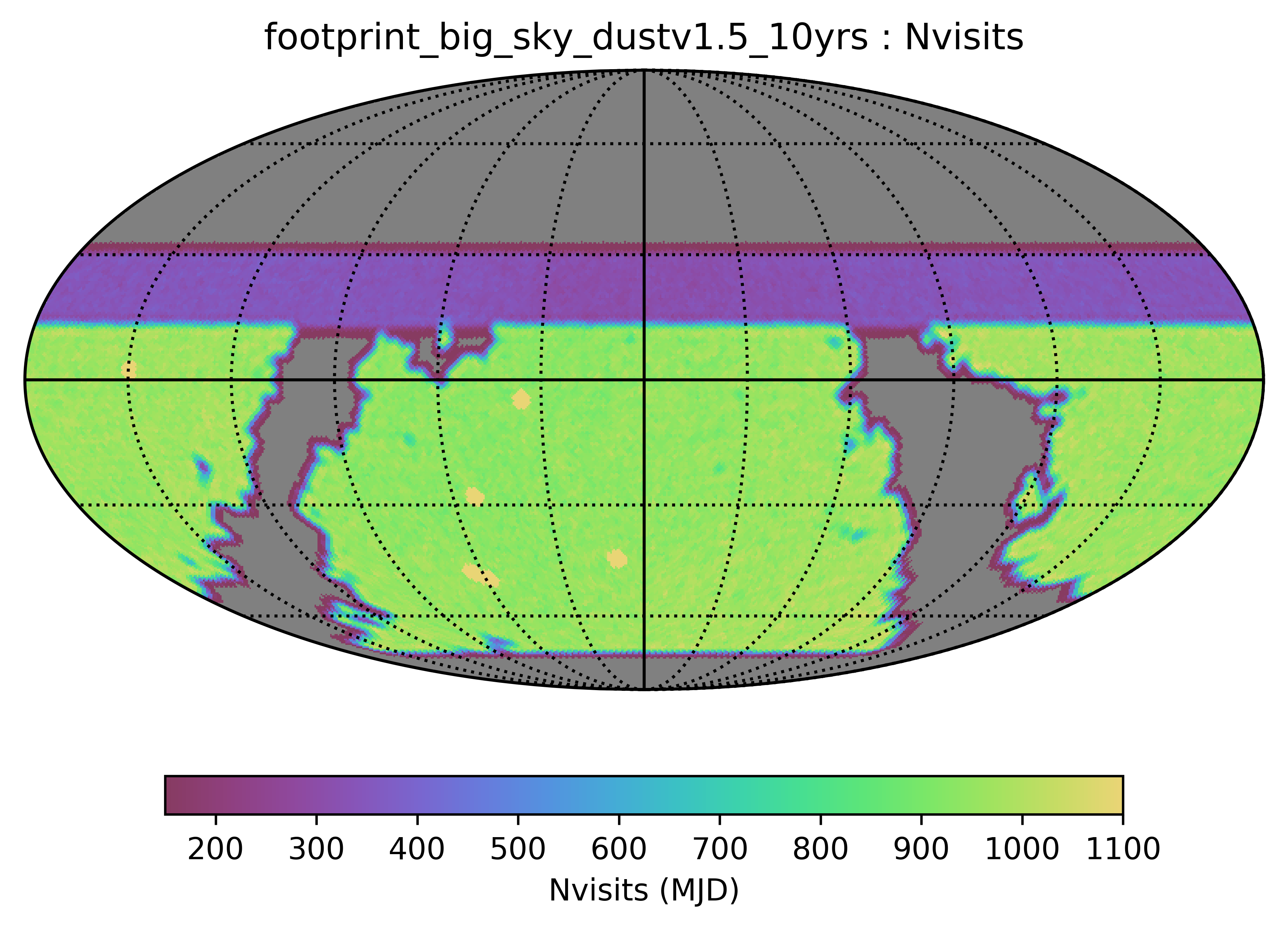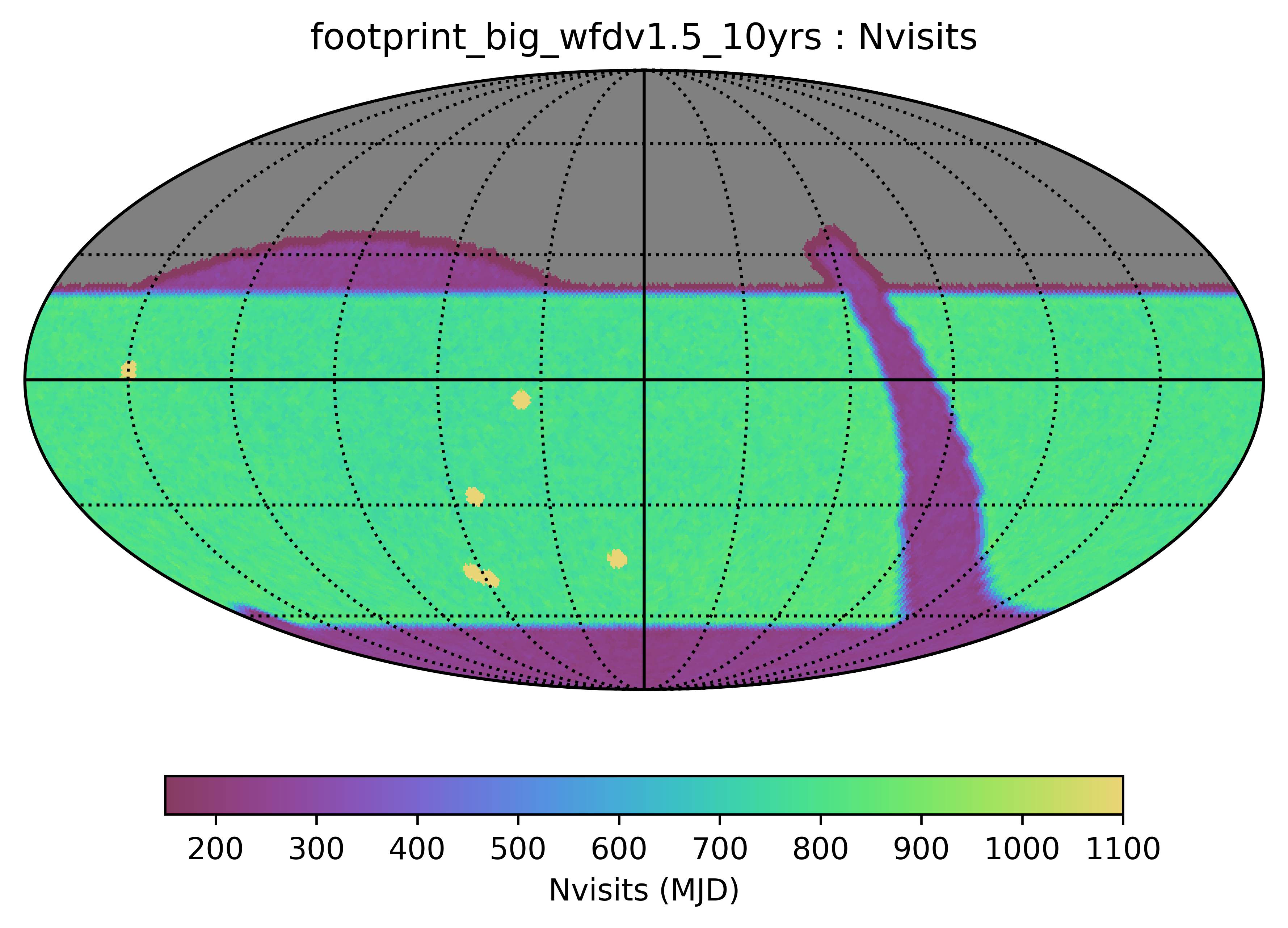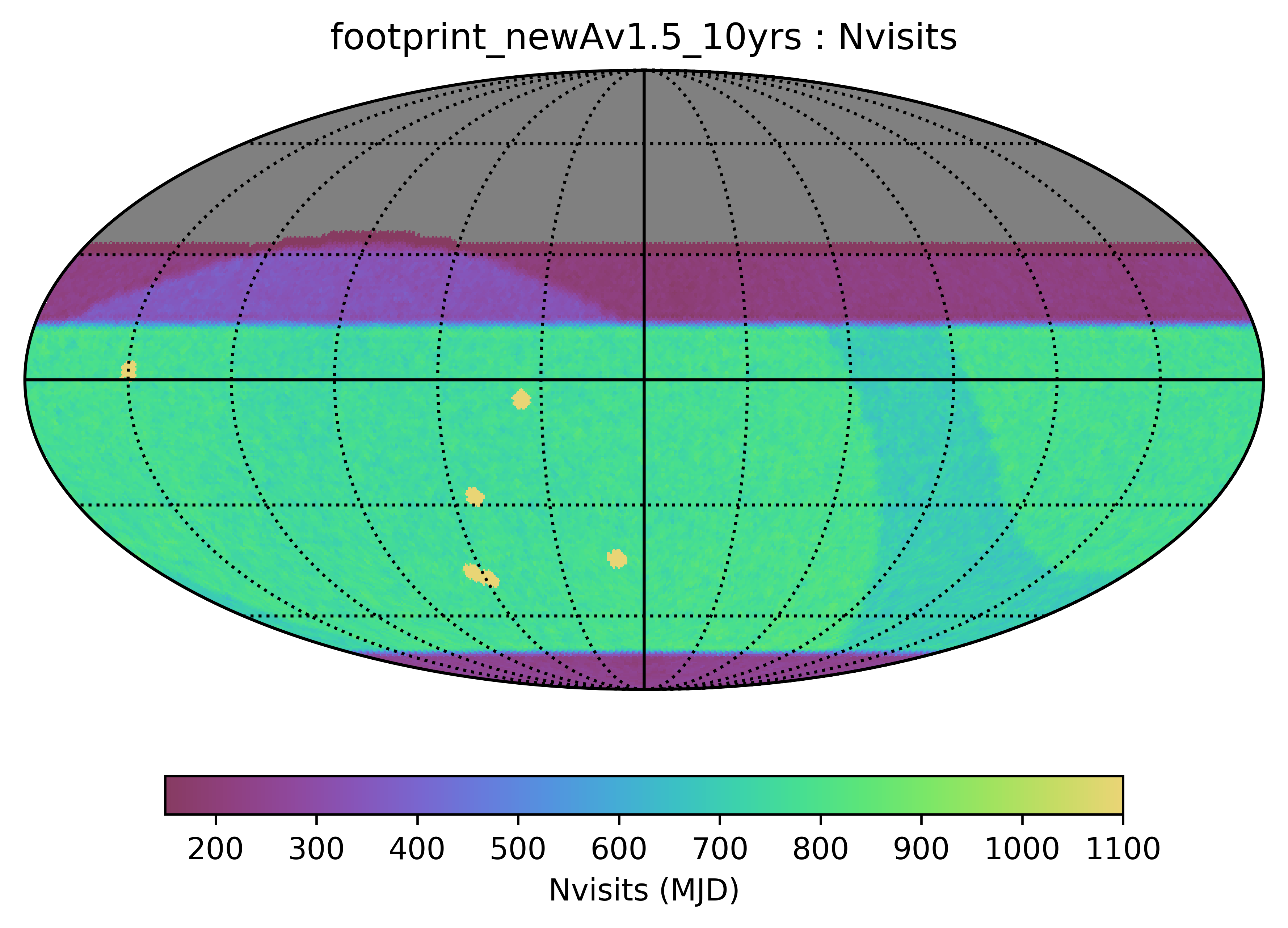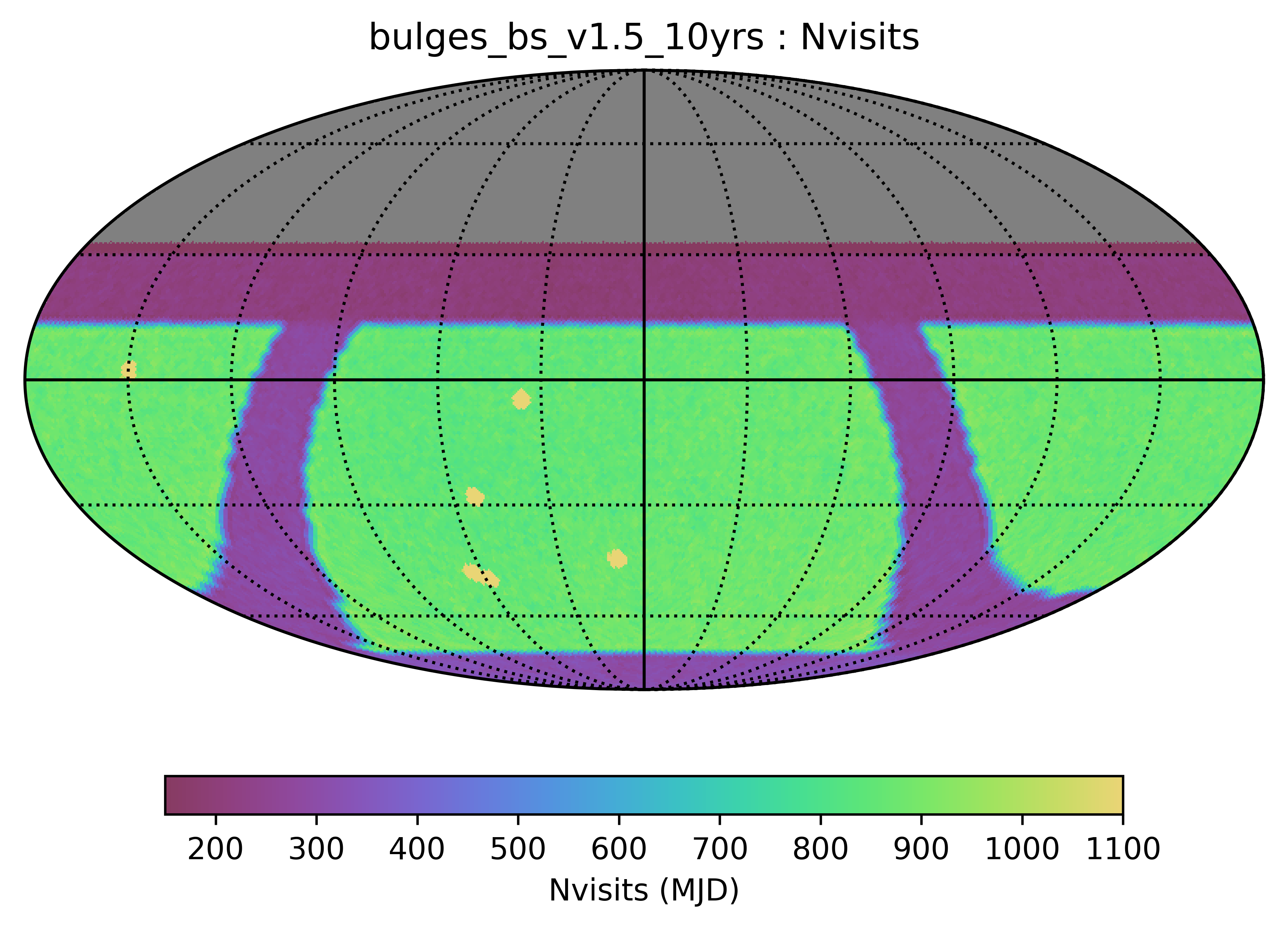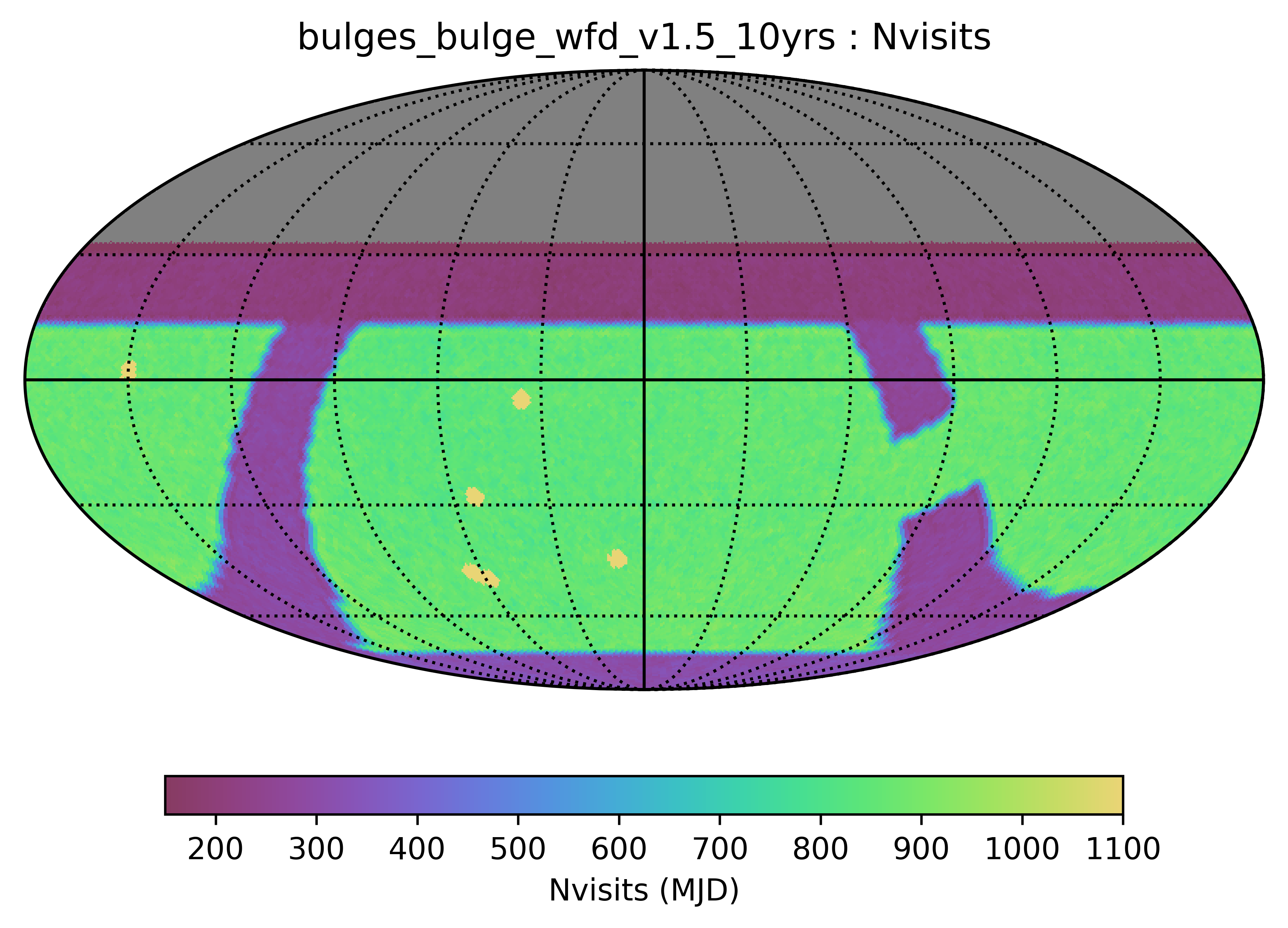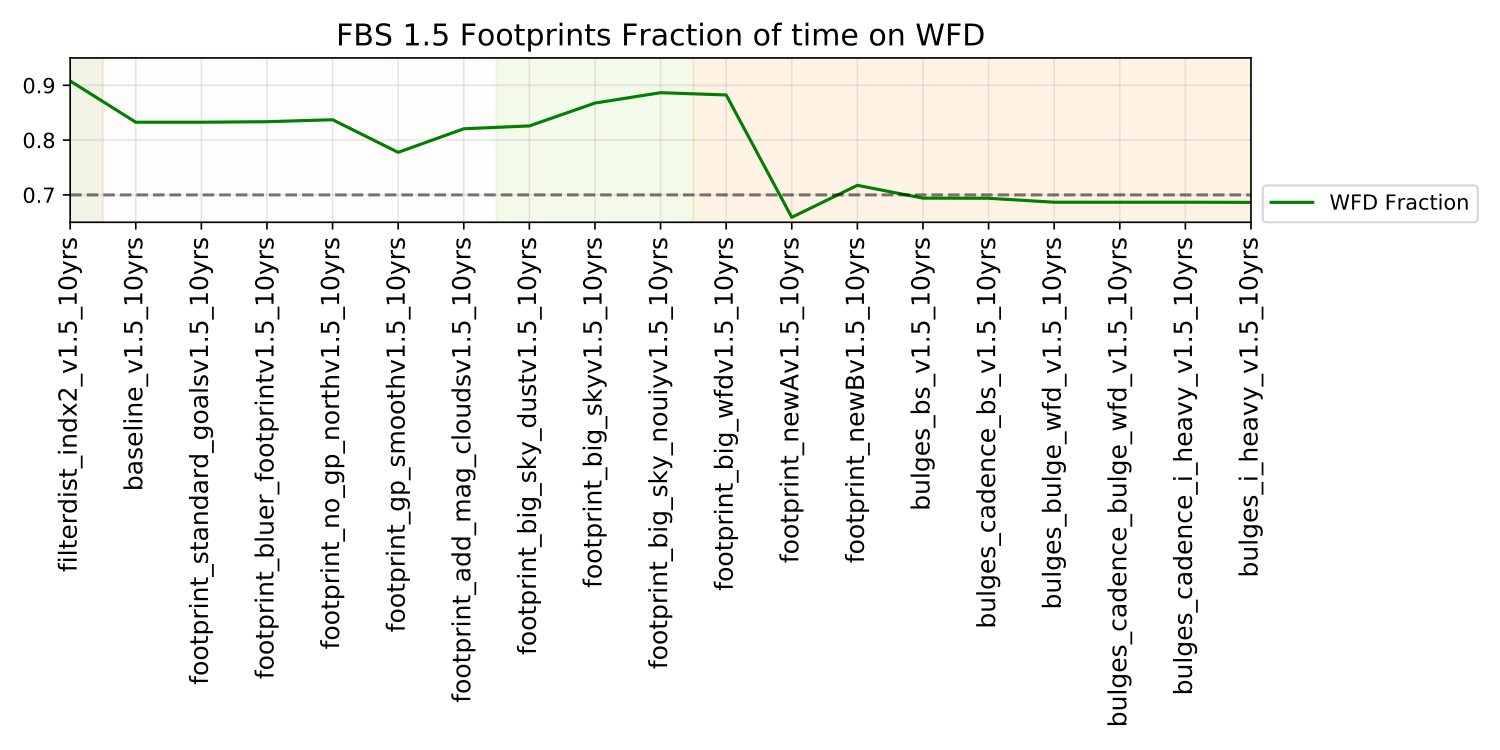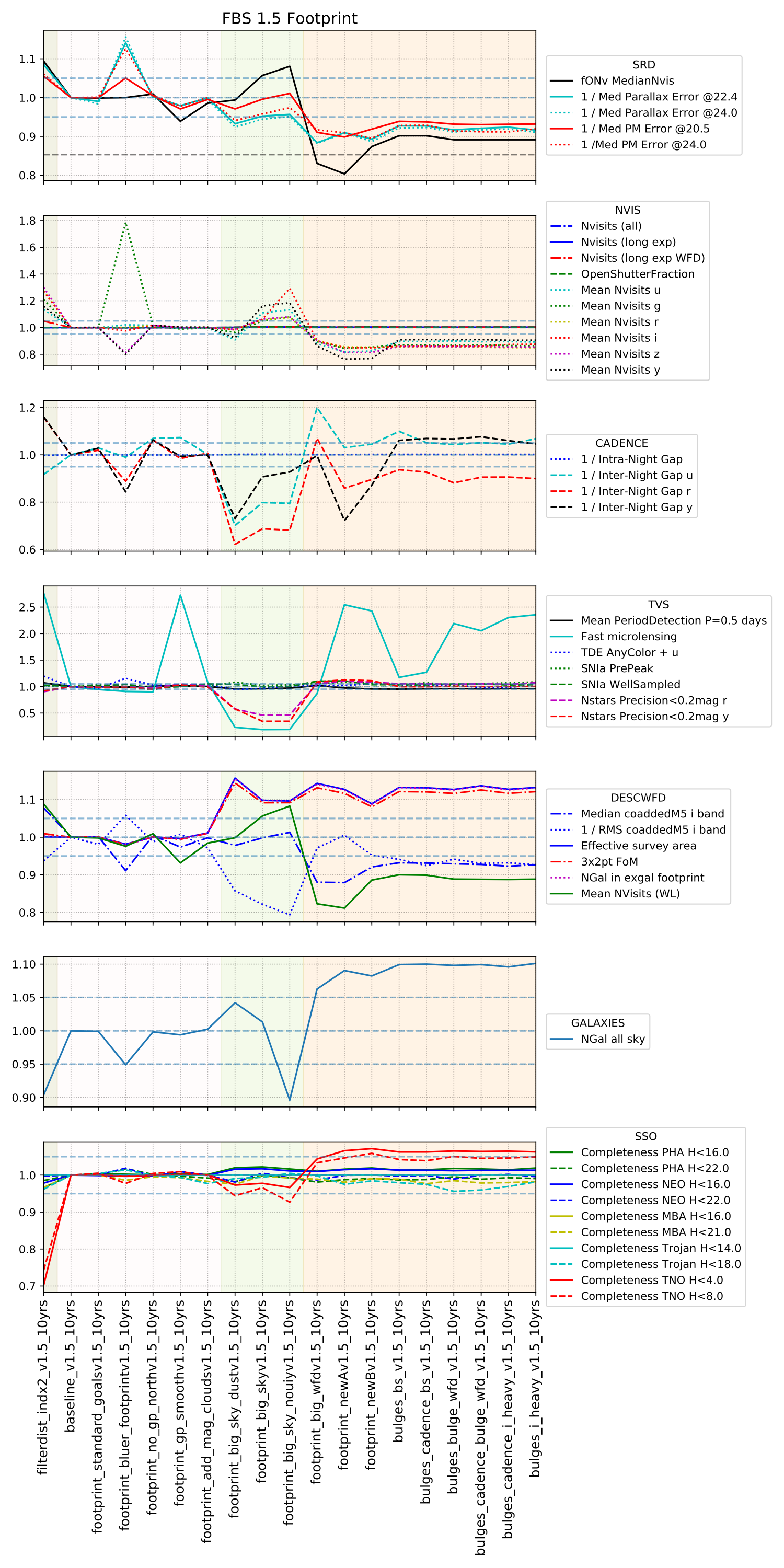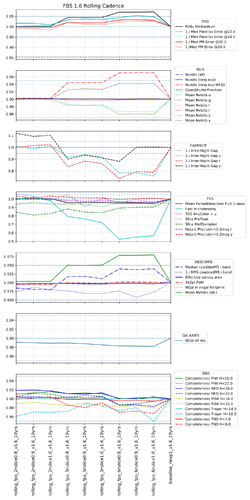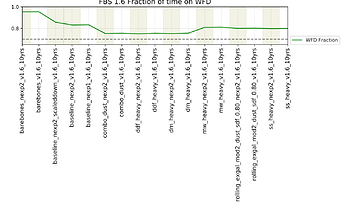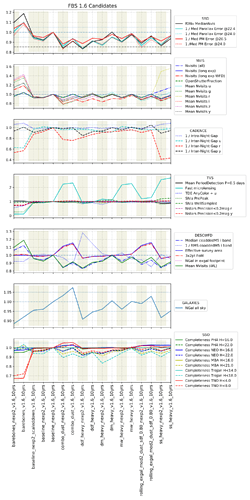A basic property of the survey is the visit exposure time. There are several options here – two snaps per visit (2x15s)[+], single snaps (1x30s), extending the u band exposure time to 60s to reduce readnoise issues[++], and/or adding variable exposure times to maintain more uniform individual image limiting magnitudes.
[+] This will remain the project baseline until the camera is on the telescope and taking data and we can confirm that 1x30s are a viable option, and even then, only after approving that change.
[++] The readnoise is more of an issue for u band because the sky is relatively dark in u. Occasional g band images are also readnoise limited, but typically this is primarily a u band issue.
It’s worth noting that the u60 simulation extends the u band visit time to 60s, but makes a corresponding reduction in the overall number of u band visits. This has a strong impact on transients which need u band visits for classification (this aspect is included in the TDE some color+u metric). To return the u band to the normal number of visits while maintaining the longer exposure time would require moving about 6% more of the WFD time into u band. This most likely would have to come from shifting visits in other filters into u (representing a shift of about 50-60 visits per field … a not insignificant change). Moving to fewer 60s visits does increase the final coadded depth in u band by 0.2 magnitudes.
The variable exposure time simulation is interesting in that the individual image depths really do become more uniform – this might make it easier to track transients and variables over time. The overall on-sky time remained the same as well. Individual image times got slightly longer (mean of 32.2 instead of 30s). However, the final coadded depth in most bandpasses got slightly shallower; this is because most of the mean individual image depths are slightly shallower as well. This is something that could likely be tuned by parameters in the scheduler (changing the target single image depth), but it does add a lot of additional complications, including how this would apply with ‘live’ telemetry.
(histogram of individual image five sigma depths in the variable exposure run compared to the baseline 1x30s run)
(radar plot comparison of the coadded depths in each bandpass in the variable exposure time run and the baseline)
